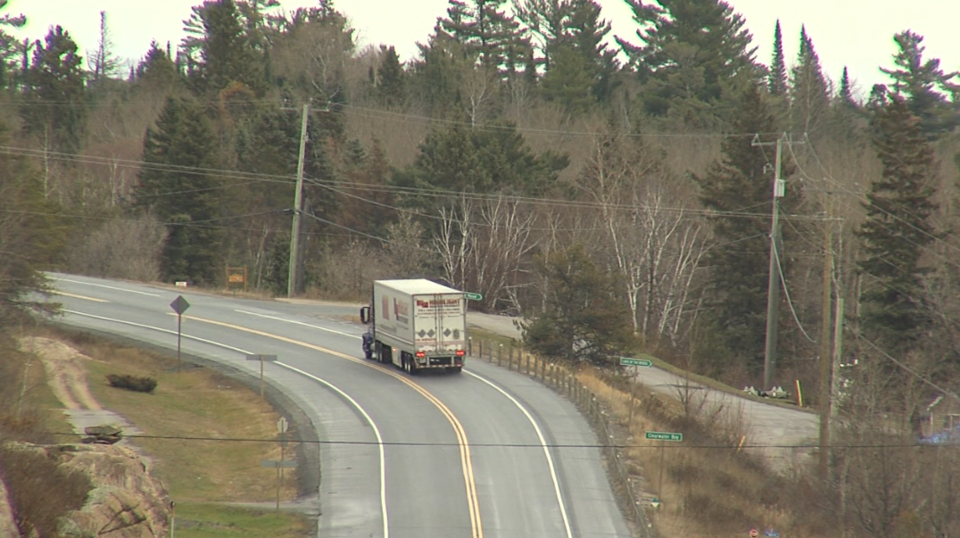The Ontario government has awarded the first contract to begin widening of Highway 17 between Kenora and the Manitoba border, though the long-awaited twinning project is still expected to stretch years into the future.
After over a decade of government promises to move forward with the project, work on the first of three sections is set to begin this spring, and conclude by 2025.
The contract announced Wednesday by the office of Kenora-Rainy River MPP Greg Rickford covers a 6.5 kilometre stretch running from the Manitoba border to Highway 673.
That’s just a chunk of the 40 kilometres of blacktop between Kenora and the Manitoba border the province plans to widen from two to four lanes over the coming years.
The contract for the first section was awarded to Kenora-based Moncrief Construction and has a value of roughly $31.7 million, the company said Wednesday.
It's a major infrastructure project, requiring the company to drill, blast, excavate and remove around 800,000 cubic metres of earth and rock, and lay down around 30,000 tonnes of asphalt, Moncrief estimated.
Section 2 of the larger project is an 8.5-kilometre stretch from Highway 673 to Rush Bay Road, and Section 3 runs 25 kilometres from Rush Bay Road to Kenora. Both still require environmental assessments, route planning, and design.
“The Twinning of Highway 17 is a legacy infrastructure project that will make roads safer in the Kenora region,” Rickford said in a statement. “Families deserve to feel safe on the roads and that is exactly what our government will accomplish by widening this stretch of the highway.”
Minister of Transportation Caroline Mulroney called the awarding of the contract “an exciting milestone towards making this critical highway safer for drivers in Northern Ontario.”
First Nations in the area gave the highway widening project their conditional consent to Section 1 last year, without yet granting it for later phases.
Rickford’s office claimed the project will support 310 jobs, though it didn’t share how that figure was reached.
Moncrief Construction estimated it will need to recruit dozens of new employees for the project, with a requirement for 30 per cent of hires to come from the Niiwin Wendaanimok Partnership, consisting of Wauzhushk Onigum, Shoal Lake # 40, Niisaachewan Anishinaabe, and Washagamis Bay First Nations.
The company also pledged to build on an existing agreement with Shoal Lake #39 First Nation to hire members there, saying Indigenous involvement is paramount.
The provincial government first announced the project was supposed to move forward in 2009, committing $100 million with federal assistance to widen 10 kilometres of highway from the Manitoba border. Those funds were later redirected to a highway twinning project east of Thunder Bay.
Rickford himself had earlier said he hoped the project could begin as soon as 2019.
